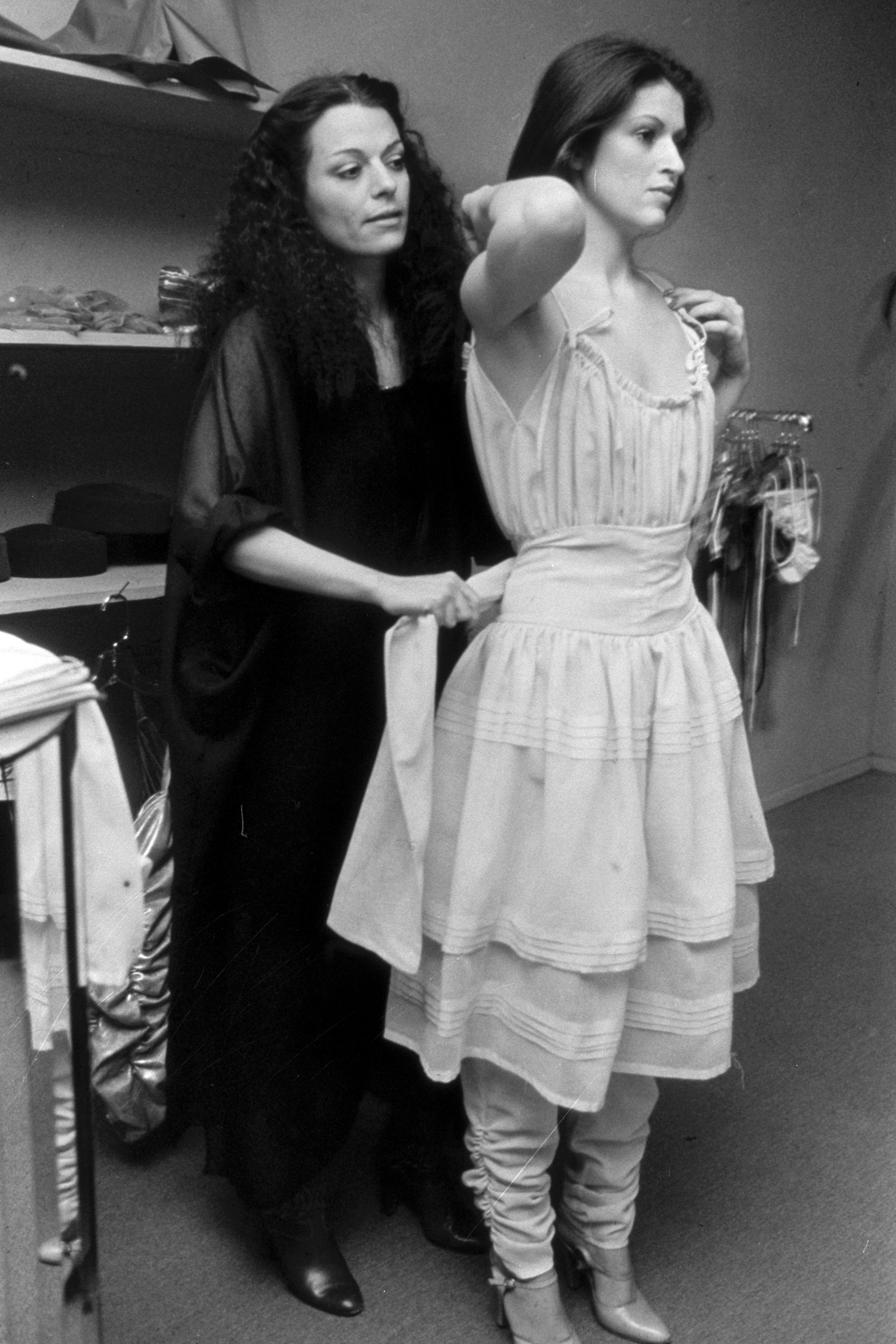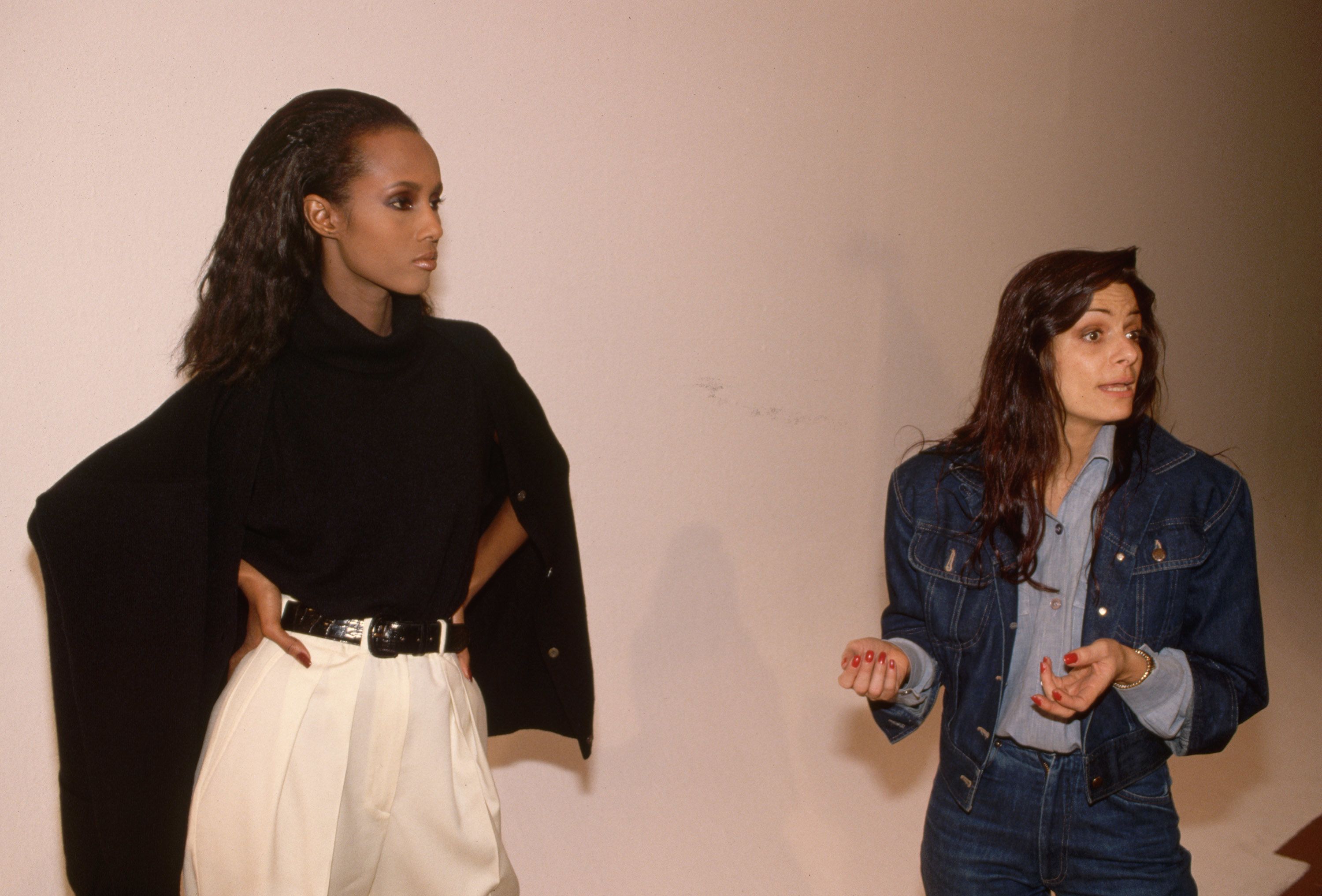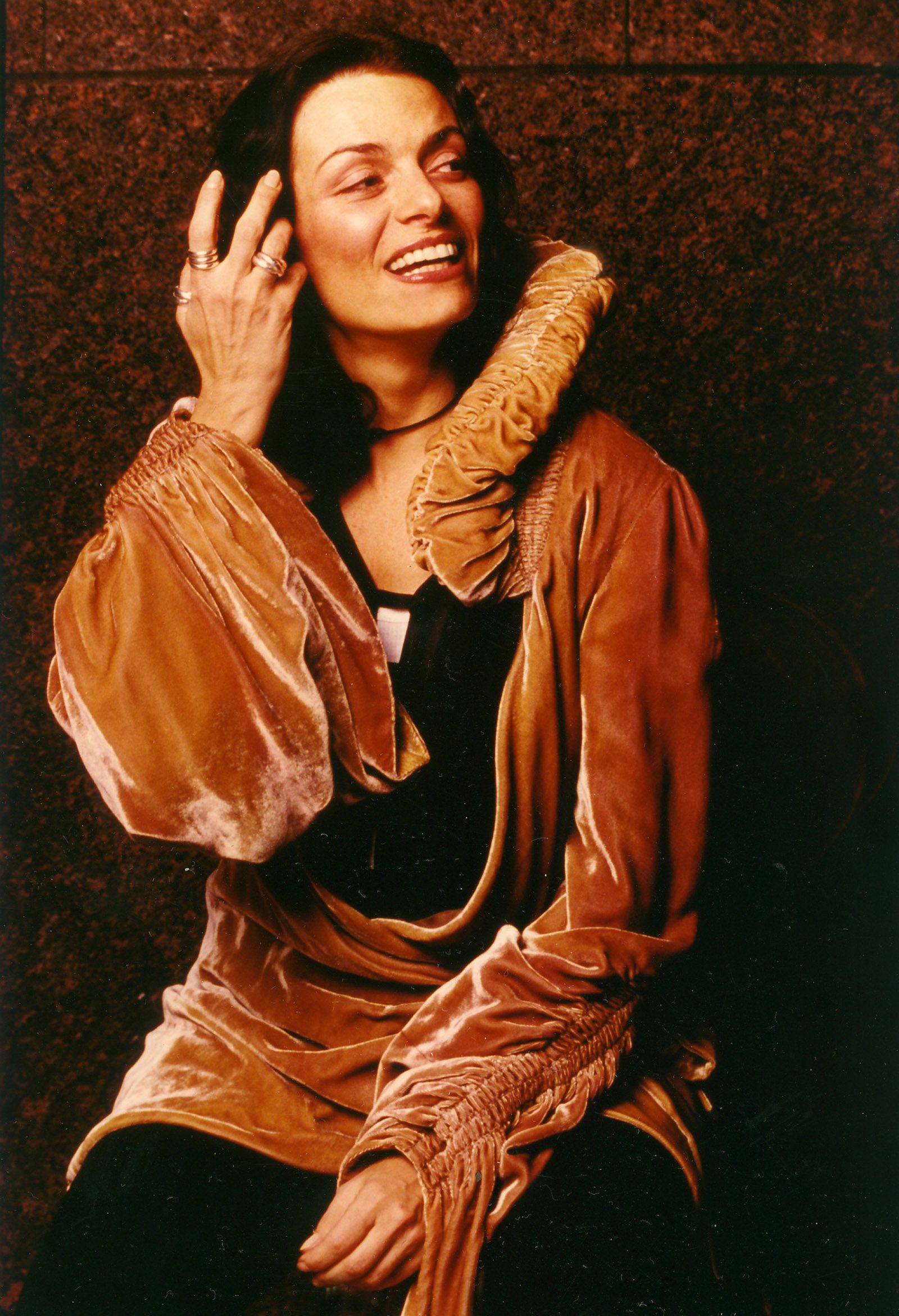At 78, Norma Kamali isn’t ready to retire. But the famed New York designer has begun to wonder how the company she built from scratch and has run for more than 50 years will continue when she finally exits.
Often, such succession plans require preparing the right leadership to creatively oversee the business and drive it forward. Kamali’s plan was to develop her own version of artificial intelligence to support them.
For months, she’s been working with Maison Meta, an AI-focused agency, to develop a customized tool that generates new designs from text prompts based on her creative DNA. They feed thousands of images from the brand’s archives into the model, teaching it the essence of her style.

The aim is not for machines to replace human designers. Kamali believes that AI has its limitations and that it takes people with original ideas to make the most of it. Instead, the hope is that when the day comes for her to leave, her team will still be able to be as creative as she was.
“The model will start to really download into my brain so that the legacy of the company can really continue as I train others here to follow what I’ve done,” she says. “I have that advantage because it has 56 years of content and only one designer. It doesn’t have different identities. It’s not as confusing. It’s very exciting. It brings tremendous value to my company in a way that it never has before.”
Kamali doesn’t just chase the latest tech industry buzzwords. Her passion for technology dates back to the 1960s, when she was an employee of Northwest Airlines developing the early computer Univac.Since then, she’s been interested in technology and looking for ways to use it in her business. A few years ago, she started thinking about AI after developing a fashion game related to a product line she designed for Walmart. Now, generative AI is offering new possibilities.
The technology’s entry into the fashion world has brands and retailers looking for uses for it. They’re experimenting with AI to write product descriptions and power chatbots, while designers like Hillary Taymour, creative director of Collina Strada, and Julius Juul of Danish brand Heliot Emil are turning to image-generating AI to push their creative boundaries. To ensure it maintains their aesthetic identity and doesn’t just spit out generic designs, they’re training the AI on past collections. Kamali may be the first to do this so extensively, with the aim of continuing her legacy.
Succession is a crucial issue for brands led by founders like herself. Many companies founded by founders like Helmut Lang and Ann Demeulemeester have struggled after their departure.
Artificial intelligence offers a new, non-traditional way to do this – or at least attempt to do so. How well it works, or if it works at all, remains to be determined.
“The limitation of AI is that it can process data, but can it dream?” Alice Bouleau, a partner at Sterling International, an executive recruiting firm working in the fashion and luxury industries, said. “Yes, of course, you can keep a file and you have a billion alternatives to what you’ve done before. But can you guess what you should do next for a brand? That’s where I’m more skeptical.”
Nonetheless, some brands may want to consider this option if they intend to stay on their current course without making any changes, says Blow.
Looking toward the future
It’s when Bouleau helps brands prepare for life after the founder’s death that the search for a successor begins early. In the best case scenario, the “future heir”, in Bouleau’s words, will be able to work alongside them for a year or two as they prepare to take over.
Preparing the AI system was done in a slightly different way.
Maison Meta has been working with Kamali’s archive team to collect and prepare the images needed to train the AI, which Maison Meta says uses the open-source model Stable Diffusion XL as a foundation, combined with another open-source tool called Fooocus, which is customized for AI. The job. Because there were so many images, they categorized them by category, starting with one of Kamali’s featured swimsuits.
As part of the process, Maison Meta discussed with Kamali her workflow and how she wanted to communicate with the AI. The images needed to be labeled with keywords, such as cut type, fabric and any other important details, so that when Kamali then entered textual prompts, it would understand what she was asking for and could generate the appropriate images. The labeled images are fed into the AI model for training. For Kamali’s swimsuit alone, there are about 10,000 images.
“It took us about a month to achieve the desired results,” says Cyril Foiret, founder and creative director of Maison Meta. “The training itself was very heavy because you need large machines. To batch process 1,500 (or) 2,000 images, it takes about seven hours of training. Then you have to do testing. You see what the results are. Then, after that, you can move on to the next one.”

Fashion models Iman and Norma Kamali in 1985. The designer has been interested in technology since he first worked with computers in the 1960s at Northwest Airlines.
Nick Elgar/Corbis Historical/Corbis/VCG from Getty Images
Kamali also made some requests that posed challenges. For example, she wanted a consistent avatar for the swimsuit designs she generated, rather than a different avatar with a different body every time she entered a prompt. Foiret said they actually had to develop a mini AI model for this.
“It wasn’t easy,” he said. “It also took about a month to get her back to normal.”
Once they’ve completed the AI training for all the different product categories, they combine everything into one master model. The whole system is run by Foiret computers installed in Kamali’s office, so it’s very secure, rather than running in the cloud.
Kamali hopes to first use AI to design a swimwear collection. But it’s still a work in progress – she calls it “rough and raw” – and she’s trying to understand how it will fit into the company. She’s convinced it will eventually change the way the business operates.
“I’ve always thought of it as a baby that’s learning to walk, but at the same time it’s a genius,” Kamali said. “I agree with that. I’m learning and experimenting, and every day I figure out how to incorporate it into the future of my company.”
Where Artificial Intelligence is Going
Kamali first considered training its own AI after meeting an e-commerce company that wanted to let AI do all the designing. As Kamali says, it wanted to download her brain. She declined, but the idea of doing something similar for her own company lingered. Last year, she reached out to Maison Meta, which was making a name for itself by organizing projects like the first AI Fashion Week in partnership with Revolve.
At the time, Maison Meta was already working on a concept called “Future Retro,” says Nima Abbasi, a partner at Maison Meta. What if you could take all the work of a designer like Vivienne Westwood (who died in 2022) and use it to build a dataset of new creations in her spirit? There may be other uses as well.

Norma Kamali in her showroom in New York around 1995. The designer hopes to first use artificial intelligence technology to design swimwear.
Francesco da Vinci/File Photo/Getty Images
“Private equity (firms) or investors want to buy dormant brands …… and want to overhaul it without spending money on a designer to design the clothes, we can help them see the future of the brand from a design perspective without them having to actually go out and make the investment,” Abbasi says.
Of course, there are certain qualities that founders possess that AI can’t replicate. Sterling International’s Bouleau points out that they set a culture for the company and give employees and products a sense of purpose. When they leave, the company still needs a strategic thinker who can provide that.
“Artificial intelligence can’t tell you why this brand is this brand. What is the reason for this product?” She said.
She added that designers also evolve over time. If a company focuses too much on the past, it may stagnate.
Kamali said that if her company were to use AI, it would have to come up with ideas that would combine what she has done in the past into something unique and innovative. She has her own reservations about the capabilities of AI.
“When a designer creates a collection, it has to have a soul,” she says. “Sometimes I think AI designs don’t have a soul.”
Kamali, a pattern maker, believes that any design must have a strong connection to the pattern. She’s unsure now how they’ll accomplish that with AI design, and is still determining which parts of the company will be trained to use her AI system. It may not just be the design team. (Some companies are developing AI tools that can generate patterns, but they’re not open source, and integrating the technology into Maison Meta’s custom AI will be a whole new challenge.)
Regardless, Kamali believes that human creativity remains indispensable. She emphasizes that human originality is different from AI.
“There are things that AI cannot replace,” she says. “But AI will offer new opportunities that we can’t resist.”
